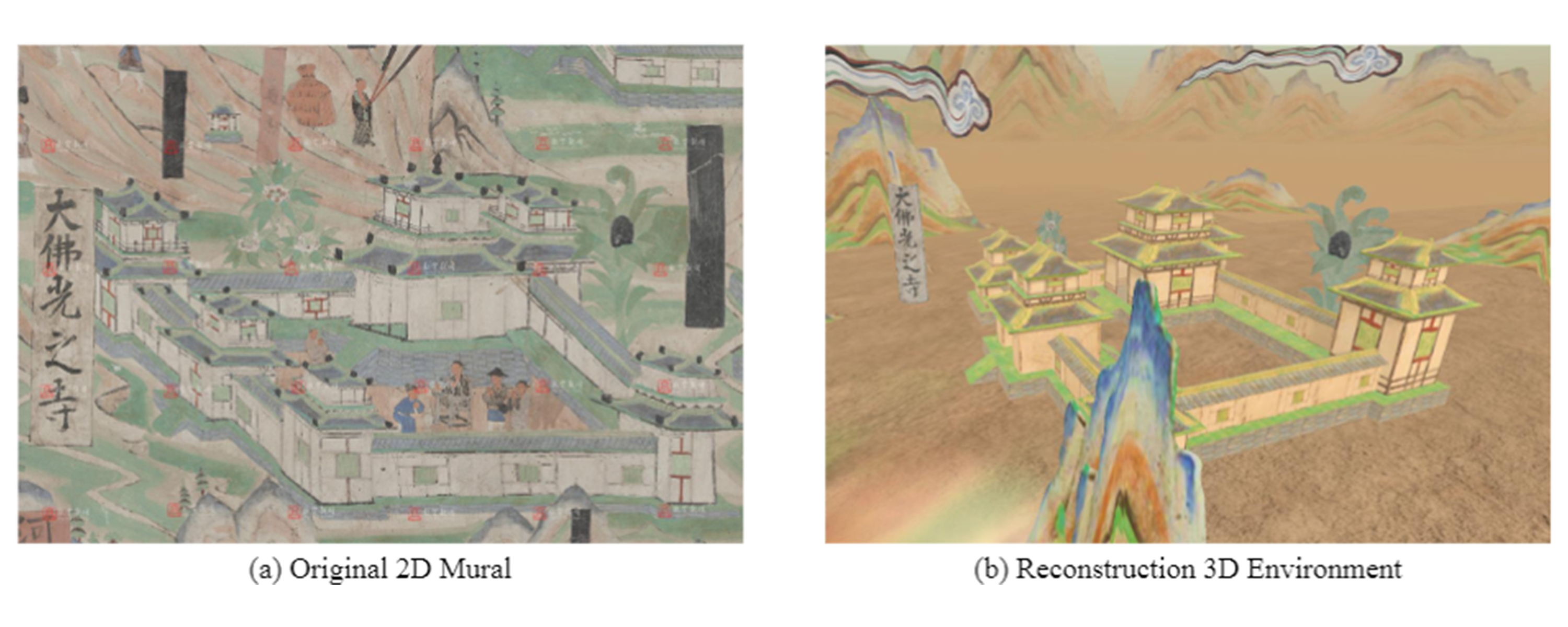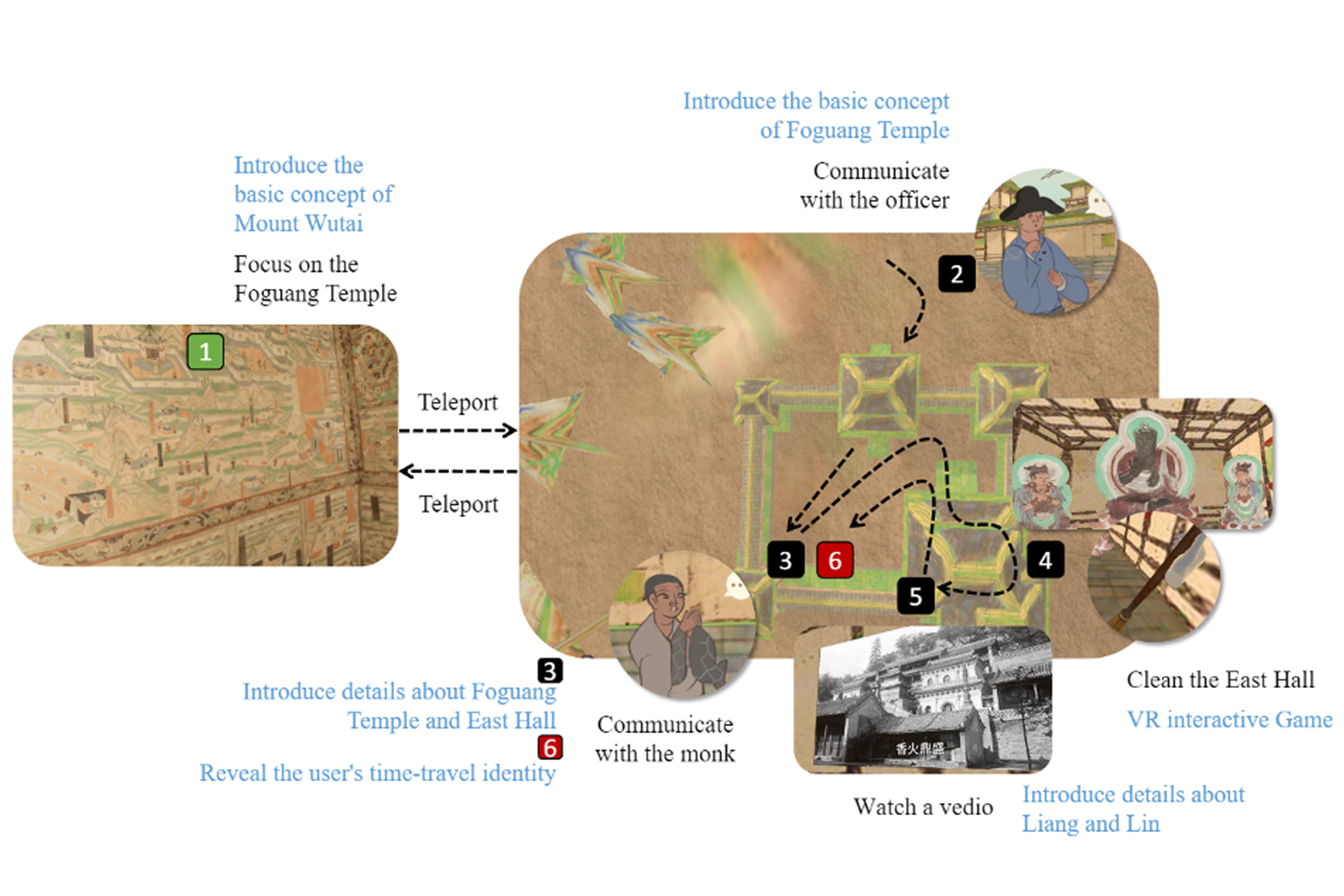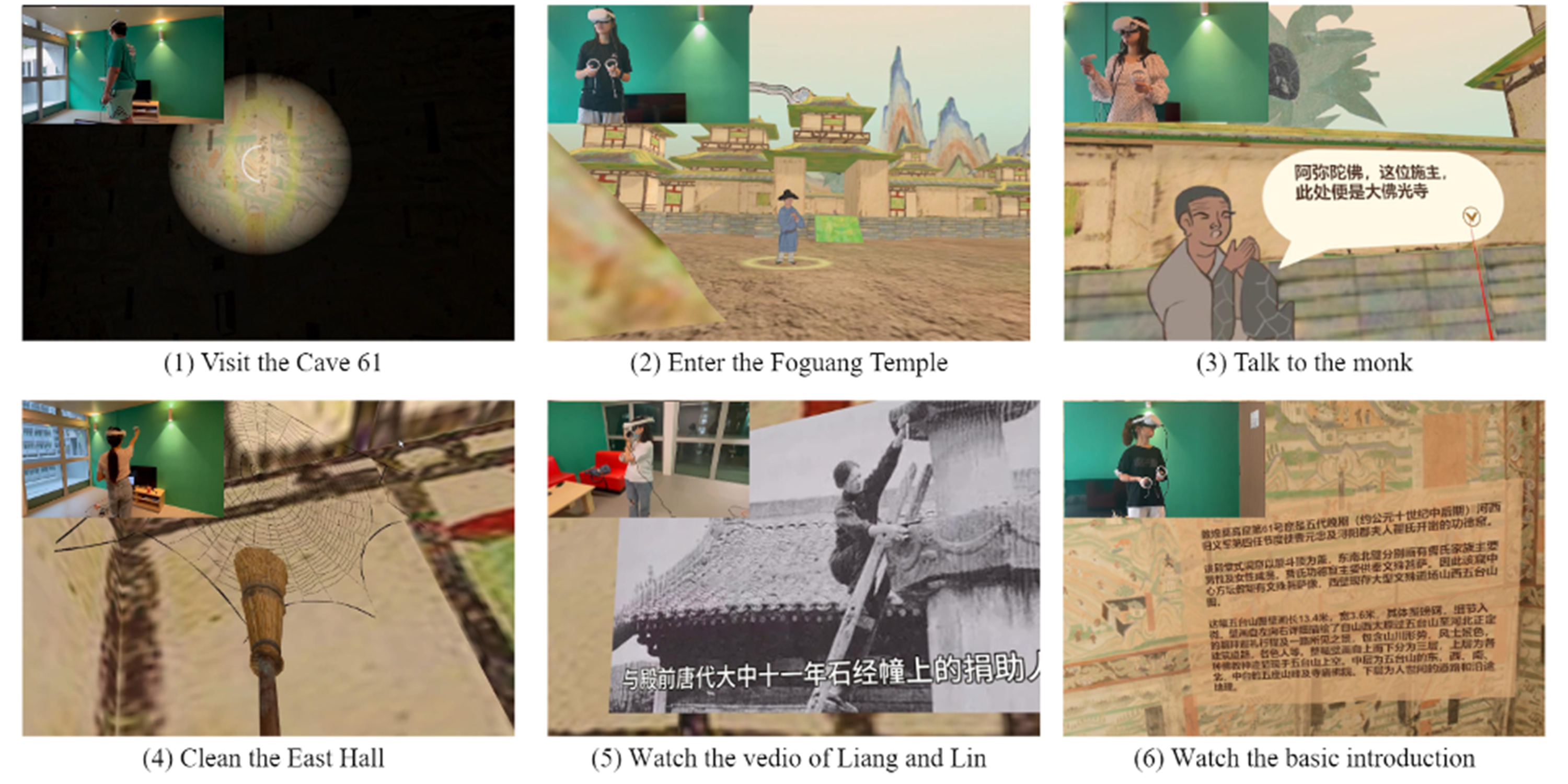Introduction
Our project, 'Pilgrimage To Pureland,' involved creating a virtual reality (VR) reconstruction
of the Dunhuang murals, focusing on the Mt. Wutai pilgrimage mural in Mogao Grottoes' Cave 61.
This VR experience is designed to make cultural heritage more accessible and engaging. Our approach
converts complex 2D murals into immersive 3D VR content, retaining the original art's essence. This
interactive VR environment provides a narrative-driven experience, allowing users to appreciate the
murals' religious, historical, and artistic value deeply.

A user study with 30 participants was conducted to assess the effectiveness of our VR reconstruction method. This study compared the VR experience with other virtual access forms, focusing on immersion and knowledge acquisition. The findings indicated that the VR group reported a significantly higher level of immersion and a better understanding of the content. In summary, our 2D-to-VR methods offer an innovative way to experience cultural heritage, enhancing user understanding of cultural and historical concepts while preserving the originality of the artworks.



